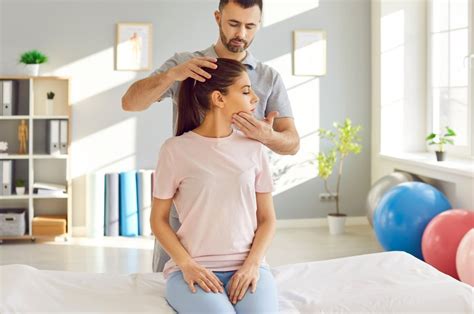Have you ever rolled your head from side to side, only to be greeted by a series of uncomfortable crunching or cracking sounds? This phenomenon can be unsettling, especially if you're unsure what's causing it. The good news is that, in most cases, neck crunching is a relatively harmless condition. However, it's essential to understand the underlying causes to alleviate any concerns and take preventive measures to maintain a healthy neck.
Key Points
- The neck crunching sound is often caused by the movement of joints and ligaments in the cervical spine.
- Gas bubbles in the fluid that surrounds the joints can also contribute to the crunching sound.
- Underlying conditions such as osteoarthritis, rheumatoid arthritis, or spinal stenosis can cause neck crunching.
- Maintaining good posture, engaging in regular exercise, and managing stress can help reduce neck crunching.
- In some cases, neck crunching can be a sign of an underlying condition that requires medical attention.
Understanding the Cervical Spine

The cervical spine, which comprises the seven vertebrae in the neck, is a complex structure that provides a wide range of motion. The joints and ligaments in the cervical spine work together to facilitate movements such as rolling, bending, and twisting. When you roll your head, the joints and ligaments in your neck move, which can sometimes produce a crunching or cracking sound.
The Role of Gas Bubbles
One of the primary causes of neck crunching is the presence of gas bubbles in the fluid that surrounds the joints. This fluid, known as synovial fluid, helps to reduce friction and facilitate smooth movement between the joints. When you move your neck, the gas bubbles in the synovial fluid can become trapped, leading to a build-up of pressure. As the pressure increases, the gas bubbles can burst, producing a crunching or cracking sound.
| Causes of Neck Crunching | Description |
|---|---|
| Joint Movement | Movement of joints and ligaments in the cervical spine |
| Gas Bubbles | Presence of gas bubbles in the synovial fluid surrounding the joints |
| Osteoarthritis | Weakening of joints and cartilage due to wear and tear |
| Rheumatoid Arthritis | Inflammatory condition that affects the joints and surrounding tissues |
| Spinal Stenosis | Narrowing of the spinal canal, which can put pressure on the joints and surrounding tissues |

Underlying Conditions

In some cases, neck crunching can be a sign of an underlying condition that requires medical attention. Osteoarthritis, rheumatoid arthritis, and spinal stenosis are just a few examples of conditions that can cause neck crunching. These conditions can lead to inflammation, joint degeneration, and nerve compression, which can contribute to the crunching sound.
Maintaining a Healthy Neck
To reduce neck crunching and maintain a healthy neck, it’s essential to engage in regular exercise, maintain good posture, and manage stress. Simple exercises such as neck stretches and strengthening exercises can help to improve flexibility and reduce tension in the neck. Additionally, maintaining a healthy weight, getting regular massages, and practicing relaxation techniques such as meditation or deep breathing can help to reduce stress and promote overall neck health.
What is the main cause of neck crunching?
+The main cause of neck crunching is the movement of joints and ligaments in the cervical spine, as well as the presence of gas bubbles in the synovial fluid surrounding the joints.
Can neck crunching be a sign of an underlying condition?
+Yes, neck crunching can be a sign of an underlying condition such as osteoarthritis, rheumatoid arthritis, or spinal stenosis. If you're experiencing persistent or severe neck pain, numbness, or tingling, it's essential to consult with a healthcare professional to rule out any underlying conditions.
How can I reduce neck crunching?
+To reduce neck crunching, engage in regular exercise, maintain good posture, and manage stress. Simple exercises such as neck stretches and strengthening exercises can help to improve flexibility and reduce tension in the neck. Additionally, maintaining a healthy weight, getting regular massages, and practicing relaxation techniques such as meditation or deep breathing can help to reduce stress and promote overall neck health.
In conclusion, neck crunching is a relatively common phenomenon that can be caused by a variety of factors, including joint movement, gas bubbles, and underlying conditions. By understanding the causes of neck crunching and taking preventive measures to maintain a healthy neck, you can reduce the occurrence of this uncomfortable sound and promote overall spinal health.



